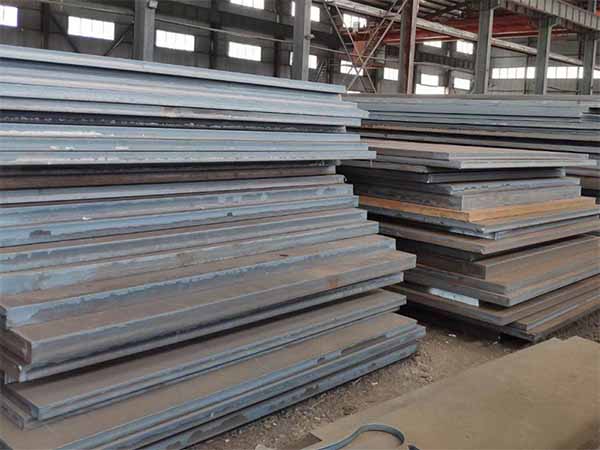
The chemical composition of DH36 and AH36:
|
Grade |
C |
Mn |
P |
S |
Si |
Al |
|
AH36 |
0.18 |
0.7-1.6 |
0.04 |
0.04 |
0.1- 0.5 |
0.015 |
|
DH36 |
0.18 |
0.90~1.60 |
0.04 |
0.04 |
0.10~0.50 |
0.015 |
Mechanical properties:
|
Steel Grade |
Thickness/mm |
Yield point/ MPa |
Tensile strength/ MPa |
Elongation/ % |
|
AH36 |
≤50 |
≥355 |
490~620 |
≥22 |
|
DH36 |
≤50 |
≥355 |
490~620 |
≥22 |
Common features of DH36 and AH36:
High yield strength: The minimum yield strength is 355MPa, enabling the hull to be used for a long time in harsh environments such as waves, strong winds, and high loads.
Excellent welding performance: Applicable to various welding processes (including submerged arc welding, gas shielded welding, etc.), and less prone to cracking.
Good formability and processing performance: It is not prone to breakage or deformation during cold bending, cutting and folding processes.
Excellent impact toughness: Even in harsh Marine environments, it can maintain structural stability and resistance to brittle fracture.
The differences between AH36 and DH36
The main difference between AH36 and DH36 lies in the temperature requirements for impact tests.
AH36: Conduct impact tests at room temperature;
DH36: Impact tests are conducted at a low temperature of -20℃.
This means that DH36 has better low-temperature toughness and crack resistance, and is usually used in ship structures operating in polar or cold seas. In terms of performance, chemical composition and processing technology, the two are basically similar. Therefore, the price of DH36 is slightly higher than that of AH36.
AH36 and DH36 ship plates are widely used in:
Hull structure and main frame;
Deck and floor manufacturing;
Ship bulkheads, side panels and superstructures;
Offshore platforms, drilling platforms, floating structures;
Other Marine engineering equipment.
Both of these ship plates can maintain long-term stable mechanical properties in the Marine environment with high humidity, strong corrosion and frequent vibration, and are one of the core materials in the shipbuilding industry.
Manufacturing and quality standards
DH36 and AH36 ship plates are usually produced by controlled rolling and controlled cooling (TMCP) or hot rolling processes to ensure fine structure and uniform performance.
Comply with the following international classification society standards:
ABS (American Bureau of Shipping)
LR (Lloyd's Register
DNV (Det Norske Veritas
BV (Bureau Veritas
Certifications from classification societies such as GL, KR, and NK.
Each batch of steel plates will undergo ultrasonic testing (UT), Impact testing (Charpy Impact Test) and third-party inspection before leaving the factory to ensure that they meet the strict requirements for Marine steel.
Why choose our shipbuilding steel plate
Central Steel has long been dedicated to the production and export of Marine steel plates and has the following advantages:
A complete classification society certification system (ABS, LR, BV, DNV, etc.);
Stable raw material supply and strict quality control;
We have sufficient spot inventory and can deliver quickly.
Professional technical support and customized processing services.
Our products have been exported to many regions such as Southeast Asia, the Middle East, Europe and South America, and are widely trusted by shipyards and engineering customers.